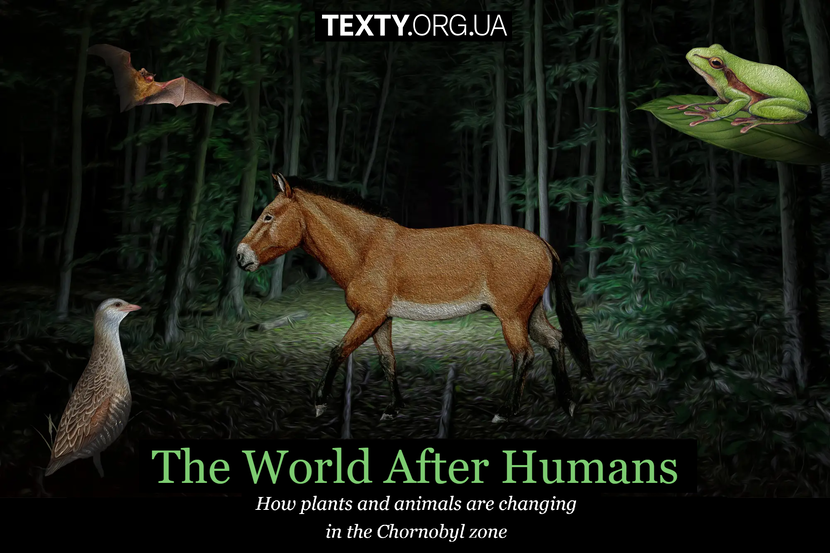Ukraine: the life after nuclear disaster
Almost 40 years ago, about 2.5 thousand square kilometers turned into an uninhabitable zone. An unprecedented evacuation of the population and the cessation of economic activity took place on a scale never seen before in peacetime. We know the reason well—the Chernobyl disaster, the largest man-made catastrophe in human history.

On April 26, 2016, on the tragedy anniversary, the state announced the creation of the Chornobyl Radiation and Ecological Biosphere Reserve, the largest in Ukraine by area. It has been included in the UNESCO World Network of Biosphere Reserves. Чорнобильський радіаційно-екологічний біосферний заповідник (zapovidnyk.org.ua)
However, the exclusion zone did not become a wasteland. The territory abandoned by people began to be taken over by nature. In the first months after the Chornobyl accident, high doses of radiation destroyed both animals and plants, giving rise to the infamous Red Forest. But within a few years, researchers noticed an increase in the number of typical species and the appearance of rare species of flora and fauna in the exclusion zone.
Fifteen to twenty years later, hundreds of thousands of hectares of the exclusion zone became a testing ground for a unique natural experiment of global significance. Hundreds of species of animals, including those listed in the Red Book, found refuge here.
Follow the link to the article of TEXTY The World After Humans (texty.org.ua) to learn about:
- Fauna of Chornobyl zone
- Flora of Chornobyl zone
- Why do animals live in exclusion zone, but people don't?
- Occupation of the natural reserve in February-March 2022
- Plans to return the exclusion zone to economic use
Source: The World After Humans (texty.org.ua); Author: Nadia Kelm
All illustrations here depict rare species listed in international and Ukrainian conservation lists.
Documenten
-
2024 - Evaluation of restored agricultural land by indicator species in the context of war
The war often forces Ukrainian farmers to leave their land plots due to either active hostilities, mining or destroyed ...
-
Back to nature, wild cows in exclusion zone in Ukraine
Within the Chernobyl exclusion zone, a herd of cows has adapted to the wild for over eight years, an intriguing subject of study ...
-
Chornobyl 35 later. Reclaimed by nature
Every spring, in April, when nature wakes up, we remember the accident at the Chernobyl nuclear power plant on 26 April 1986. ...